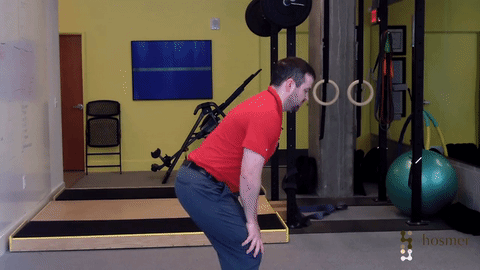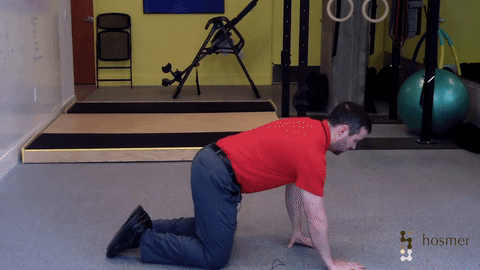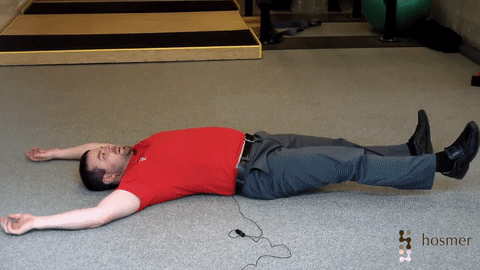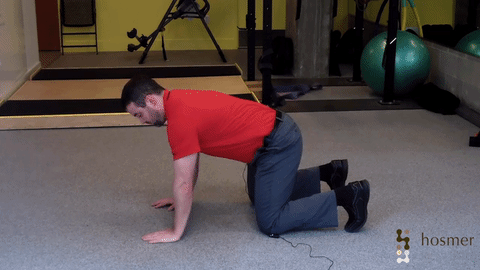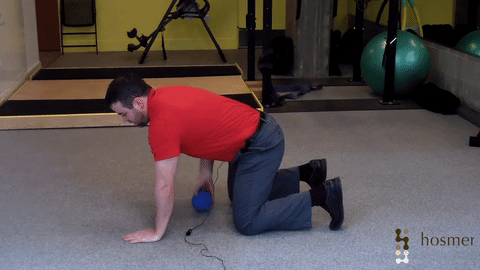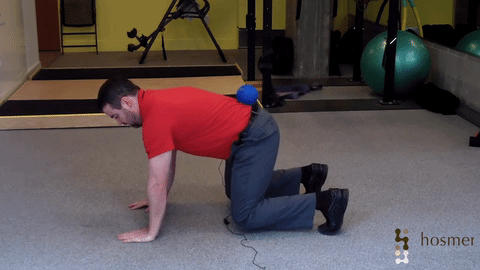One of the most common things I see in today’s world is a lack of time invested in the basics. In the internet-driven, 10-second sound-byte culture we live in, we are always looking for the latest and greatest, most cutting edge, “shiny” thing out there.
In the martial arts world, no one wants to learn how to block a punch or demonstrate proper footwork, but how to throw a 360 degree flying tsunami ninja kick.
In the music world, we don’t want to learn our scales, but instead desire to jump into learning that sick guitar riff from Van Halen’s “Eruption.”
In the nutrition world we don’t want to think about things like portion control or eating simple, whole foods, but how many milligrams of unicorn tears to be ingesting to burn off that stubborn belly fat.
In the exercise world, no one is satisfied with a basic squat, but need to be doing a rear-foot elevated Bulgarian Split squat while balancing on a bosu ball and juggling kettlebells.
Okay, okay…you get the point…
It’s human nature that we always want to go for the coolest looking thing, but as a result we often develop gaps in our lives. Most of the time, we can get by and do our normal daily routines with these built-in gaps, but sooner or later it comes back to bite us. One of the most common areas in which we see “gaps” is basic movement fluency.
We should know that life is movement, and first and foremost, we should be able to move our bodies! Before we grab any type of weight, jump on any machine or take any pills, we should be able to handle our body—just as well as we did when we were little kids. Imagine if you could move again with a smile on your face…
Many of us have seen so many great athletes with quite amazing muscle structures, but unbeknownst to many, they lack the functionality of a well-developed body. A great example of this is any number of the pro athletes I have worked with over the years: While they may be able to dunk a basketball or catch a 60-yard touchdown, many are unable to perform basic tasks like touching their toes once you take them off the court or the field. While many of these very gifted individuals can get away with these gaps in their movement literacy for a while, it is often these underlying deficiencies that lead to injury.
Movement is a language and like the examples above, many of us have lost the foundation of the basic pillars. As a result, key pieces of movement fluency are missing, which could potentially catch up with us and cause us injury in the long term.
We grow up as children with a full palate of movement competency, but as we enter school and begin sitting in desks for long periods of time combined with a lack of physical activity and sedentary lifestyle, we soon lose the innate movement skills with which we are born. This pattern perpetuates into adulthood, as we sit at a desk for hours on end without taking a break.
From the time we are babies, we all go through more or less the same movement development process. Simply but, first we learn how to turn our head, then roll, then crawl then stand, then walk and then run, jump and other advanced movement patterns. This is known as the Neurodevelopment Sequence. While it is important that we display competency in each of these movement developmental stages, this blog will only cover the first few steps: namely, rolling and crawling variations. By going back and improving these seemingly childlike movement skills, it will help to not only reset your innate movement vocabulary, but also to keep you pain free and moving well long into your old age.
THE IMPORTANCE OF MOVEMENT COMPETENCY AS WE AGE
One of the biggest fears of, shall we say, the “Chronologically Experienced” population is fear of falls or being unable to stand up from the floor after a fall, and this is rightly so, as major injuries (including broken hips and debilitating low back pain) can lead to a premature demise. In fact, a recent study from the European Journal of Cardiology showed that the ability of subjects (ages 51-80) to stand up from the floor without the use of their hands could determine whether or not they were likely to die within the next 6 years of ANY cause. To take the test yourself just click on the link here. Needless to say the basic movement skills of rolling and crawling are essential for the ability to get on and off the floor.
Many people don’t like doing floor work because they are worried they will look “silly” or “undignified,” but now is not the time to let our ego get in the way. I would rather spend a few minutes on a daily floor routine, than months confined to a hospital bed with a broken hip or worse.
GETTING STARTED
If you haven’t been down on the floor in a while, the key is to start slowly. The first thing to do is to find an open comfortable space—preferably somewhere with carpeting or a little padding. Some gyms have dedicated mat space which is ideal, but laying down an exercise or yoga mat is fine for those who need a little extra cushioning. If you are worried that you won’t be able to come down to the floor or stand up on your own safely, make sure you have a strong spotter to help. If no one is available, you can even start by doing some of these drills on your bed.
While there are many ways to safely get down on the floor, here is an easy sequence you can use to get down to the floor safely while keeping your back in an ideal position as well.
THE HARD ROLL
The Hard Roll is a great place to start when doing floor work. The idea is to separate your body into to upper and lower halves and see if you can perform bilateral rolls using just one portion of your body.
- Lie flat on your back with your arms overhead and and legs flat on the ground. I want you to image that you are numb from the waist up and only have use of lower body. Using only your legs, see if you are able to roll over onto your stomach and then back onto your spine. Then try rolling the opposite direction. Be cognizant to keep your upper body completely limp and lifeless and not to use any momentum.
- Repeat the exact same process as step one except this time I want you to imagine that you are lifeless from the waist down and can only use you upper body to perform the rolls. Most people will find this version much more challenging.
CRAWLING
Crawling is an extremely important skill in human movement fluency, and one that is often glossed over or discounted by over-involved parents who are rushing their young children to walk so they can brag to their friends about how little junior started walking at 2 months while reciting Shakespeare and playing the violin. Studies show that children who skip the crawling phase of the Neurodevelopmental Sequence often show a marked movement incompetency as adults.
Regardless, many people have not come down to the floor and crawled in many years. Not only will it make your core stronger and your body work together more seamlessly, it will also stimulate your brain, improve your balance and assist you in being able to get on and off the floor with ease. Below is an easy crawling progression that you can follow. As with any exercise, make sure you are competent with and can proficiently perform the movement before progressing to a harder variation. Progressing yourself too quickly with poor movement quality will only make you worse and reinforce bad habits.
QUADRUPED WITH ALTERNATING HAND RAISES:
Get on all four with arms directly beneath the shoulders and knees directly beneath the hips about shoulder-width apart with the toes tucked (plantar flexed). Make sure your spine and pelvis are neutral. Throughout this entire drill I want you to imagine that you are balancing a full glass of my favorite beer on your low back. If your pelvis shifts and you spill my beer, I’ll get very angry, and many push-ups will be in your near future. From this position slowly alternate lifting one hand on and off the ground. Everything should remain neutral. Again, don’t spill my beer.
QUADRUPED WITH ALTERNATING LIMB LIFTS:
Get into the same position as above, but this time, when you raise your hand off the ground, lift the opposite leg at the same time (e.g. right hand and left leg). Make sure the hand and leg leave and return to the ground at the same time. Keep the spine neutral and pelvis quiet. DON’T SPILL MY BEER!!
QUADRUPED WITH ALTERNATING LIMB LEFTS-KNEES UP:
Repeat the exact drill as above with the exception that the knees stay off the ground the entire time. Feel the burn.
CRAWLING:
Once you have mastered the above three drills you are ready to progress into full crawls. There are an endless number of crawling variations, some of which include crawling forward, backwards, sideways, bear crawls, dragon crawls, etc. The possibilities are endless, so have fun with them! Doing crawl variations can act as a great warm-up before workouts.
Have fun filling those “gaps” in your movement fluency and try adding some of these fun floor variations into your daily routine and I bet you’ll be surprised by how great you feel!
MOVE WELL AND MOVE OFTEN!!
Sources:
Barreto de Brito et al., Ability to Sit and Rise From the Floor as a Predictor of all-cause Mortality. European Journal of Cardiology, December 13, 2012.
